Increase revenue from freshwater fish stocks
From June to October of the lunar calendar, when the water from the upper Mekong River carries alluvium to the Mekong Delta, the residents of Dong Thap and An Giang provinces are busy exploiting the products of the flood season. For the people, the flood season is not only a season of abundant fish and shrimp, but also an opportunity to improve the fields, help the land recover and maintain the tradition of sustainable agriculture .

Dong Thap farmers eagerly catch fish during the flood season. Photo: Kim Anh.
It has been exactly one year since I returned to Quyet Tien Ecological Agricultural Production Cooperative in Long An A Hamlet, Phu Tho Commune (Dong Thap Province). Completely different from the gloomy atmosphere of the previous flood season, this year the water level is high, fish and shrimp are abundant.
It was past 10am, the fields were full of water, the sound of fish splashing in the water was heard as the nets were being pulled up by Mr. Nguyen Thien Thuat - Deputy Director of Quyet Tien Cooperative.
The community fish storage model during the flood season, implemented by Quyet Tien Cooperative for over 2 years, has proven effective when fish come in large quantities, farmers have profits not less than 3 months of rice cultivation. It is estimated that since the beginning of the flood season, 5 households participating in aquatic exploitation have earned about 120 - 130 million VND.
Mr. Thuat said: “At first, it was not easy to get people to agree to implement the community fish storage model. Some households specializing in traditional fishing opposed and even cursed at them. But when they saw the fish in the fields, and the income was many times higher than the old fishing method, everyone began to believe and participate.”

Quyet Tien Cooperative has been successful in building a community fish storage model combined with eco-tourism during the flood season. Photo: Kim Anh.
From the initial 20ha trial, the model has now expanded to 170ha. Fish are released in natural fields, ensuring both ecology and creating stable income for the community. In addition, the cooperative also cooperates with businesses to produce 20ha of organic rice and 100ha of rice following the process of the 1 million hectare high-quality rice project, reducing emissions. This method helps preserve the natural ecosystem so that rice and fish can grow together, bringing income to the people.
In the future, the Cooperative will establish a community fish exploitation team to manage the exploitation, ensuring the rights and responsibilities of the people. From the profits, the Cooperative will create a fund to regenerate aquatic resources (buy fish seeds) and support disadvantaged households in the area.
Notably, over the past year, Quyet Tien Cooperative has also developed an eco-tourism model on the fields during the flood season, creating a significant additional source of income (accounting for about 20% of total revenue). The number of tourists visiting Quyet Tien Cooperative is about 500 - 600, mainly individual customers who know about the Cooperative through social networks.
Coming here, visitors can experience picking sesbania flowers, picking ca na, setting up roofing, removing traps, fermenting eels or untangling nets... In each experience, visitors can feel the rhythm of life in the West and the connection between people and nature.

The 2025 flood season is considered by locals to be a beautiful flood season, bringing abundant benefits. Photo: Kim Anh.
Mr. Thuat emphasized that the cooperative's way of doing things is to go step by step, not to rush to do big things. Currently, the cooperative mainly produces safe rice and provides agricultural services, tourism is a supplementary activity to exploit the value of the flood season. "To develop the eco-tourism model, the cooperative really needs the real participation of its members as well as the resources of young people to operate the model. With the profits earned, each year the cooperative will continue to invest in expansion, ensuring the sustainable development of the model," Mr. Thuat expressed.
Windy season...
In Co To commune (An Giang province), young man Dinh Hoang Tinh (born in 1994) has turned his childhood experiences in the rice fields and the flood season into a unique agricultural tourism project with the model of the "Windy Season" coffee shop. With the perspective of a "professional" tourist, Hoang Tinh wants to preserve the values of his homeland in the context of modern development.
He confided that growing up, he was familiar with the scent of rice and young rice seedlings, familiar with the days of rowing boats to pour rice straw, catching fish, picking sesbania flowers during the flood season, familiar with the summer days of flying kites after the harvest or the days of ducks running around the countryside... Those impressions inspired him to come up with the idea of exploiting the rustic soul in today's life.

Tourists experience the flood season fields at the Windy Season restaurant in Co To commune (An Giang province). Photo: Kim Anh.
On his family’s 2,000m2 field, this young man creates vivid landscapes suitable for each season. During the rice season, visitors can stroll and take photos on the road in the middle of the green rice fields. During the flood season, they can row boats, make bamboo traps, catch fish, pick sesbania flowers… All are designed to connect people with nature, while creating jobs for local people.
The name “Wind Season” also has a special meaning. The seasons never end, the cycle of nature and life. In the mountainous region of Co To, the southwest wind moves to the northeast, the flood season comes to the rice season…, all create a lively rhythm of the countryside.
With 10 years of experience in the tourism industry, Hoang Tinh can observe the transformation of his hometown An Giang. When the roads are concreted, traveling is more convenient, he realizes this is an opportunity to develop tourism. Although not located on a major road, he believes that it will be attractive to young tourists and backpackers by motorbike. Especially the flood season is a special experience for many domestic and foreign tourists when coming to the West.
Co To Mountain is part of the That Son Bay Nui range of An Giang province. During the flood season, at the foot of the mountain is a vast field of water with many natural products. Every evening, the sunset creates an extremely vivid picture.
Tourists coming here not only sit and admire the scenery, check-in but also experience the life of local people through activities such as rowing boats, pouring straw, catching fish, picking sesbania flowers, removing traps, and covering fish... All are organized by Hoang Tinh based on actual conditions and with the support of local people. Hoang Tinh is also willing to rent land to local people for free so that the rice fields can create landscapes, a symbiosis between tourism and agriculture.

During the rice season, the fields become extremely unique tourist destinations. Photo: Provided by the character.
Hoang Tinh shared: “No matter how beautiful a painting is, if no one admires it, it is just an ordinary scene. When the Wind Season restaurant opens, I invite friends to relax and recharge, and I am also happy.”
Thanks to the support of local people, from renting boats, rafts, placing nets… to helping tourists experience daily life, tourism activities are quite smooth. “The flood season is less than before, but for us, missing the flood season means missing a part of the soul of the countryside,” Hoang Tinh confided.
However, expanding the model still faces many difficulties due to the limited professional tourism services in the locality. The problem of accommodation is also a big problem as there are not many facilities that meet the standards. Hoang Tinh plans to take advantage of the available space, equipping more necessary items so that tourists can experience the rustic life.

In the modern development trend, the agricultural tourism model has become attractive to many tourists. Photo: Kim Anh.
Hoang Tinh also aims to develop more experience areas in the fields and accommodation, camping in the middle of nature, limiting plastic, prioritizing wooden, ceramic, and terracotta items, creating closeness and friendliness.
Currently, the Windy Season has attracted many tourists to An Giang, especially on weekends. Revenue fluctuates from 1 to 2 million/day, on weekends it can be 2 to 3 million/day. Most tourists travel alone by motorbike from An Giang and other provinces to experience and freely explore.
Source: https://nongnghiepmoitruong.vn/mua-vang-cua-cu-dan-dau-nguon-d783254.html






![[Photo] General Secretary To Lam and National Assembly Chairman Tran Thanh Man attend the 80th Anniversary of the Traditional Day of the Vietnamese Inspection Sector](https://vphoto.vietnam.vn/thumb/1200x675/vietnam/resource/IMAGE/2025/11/17/1763356362984_a2-bnd-7940-3561-jpg.webp)





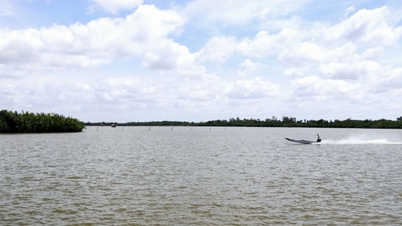

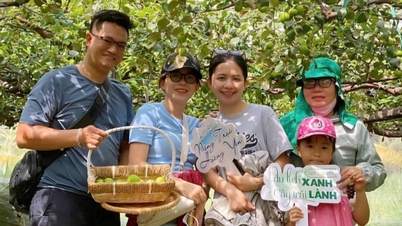
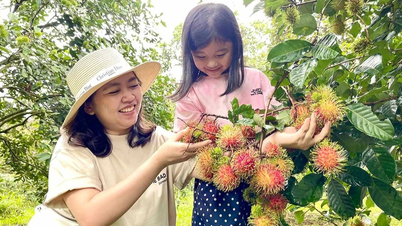




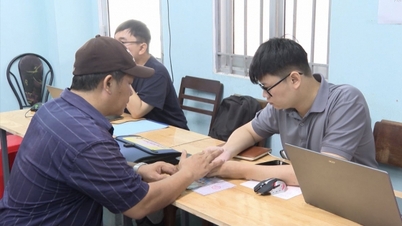

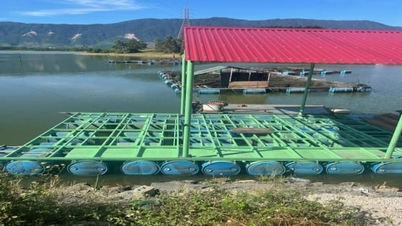
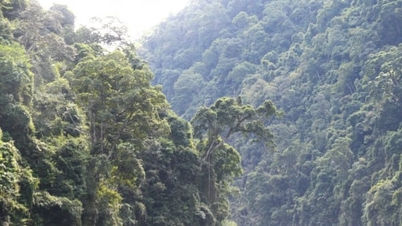
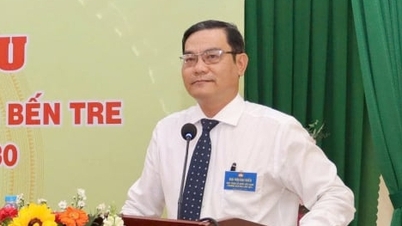




![35 years of building a high-quality cattle herd: [Last article] Continuing achievements](https://vphoto.vietnam.vn/thumb/402x226/vietnam/resource/IMAGE/2025/11/18/1763418782764_5239-anh-gia-trai-bo-o-ca-1-1-nongnghiep-175228.jpeg)
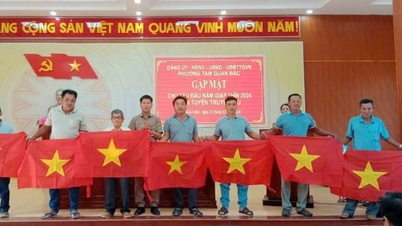

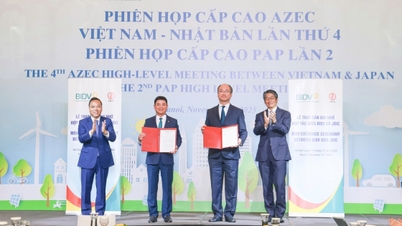
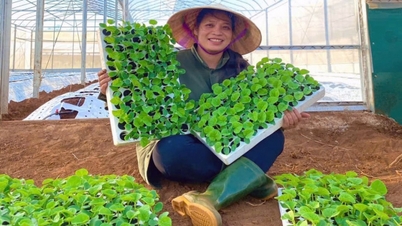

























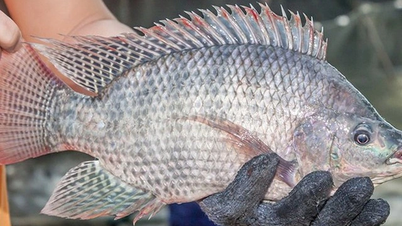




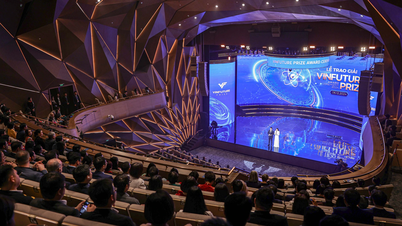


























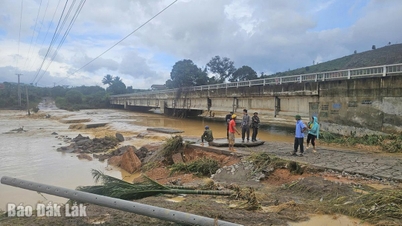



















Comment (0)